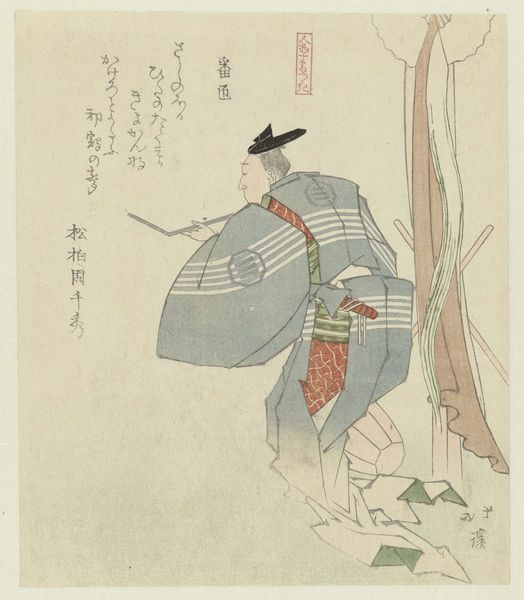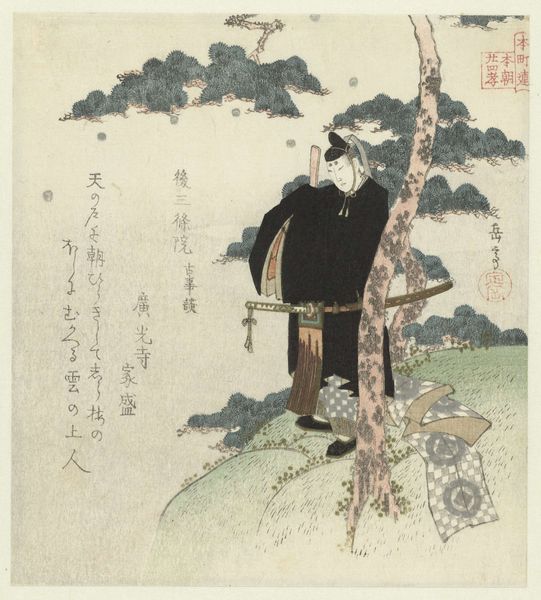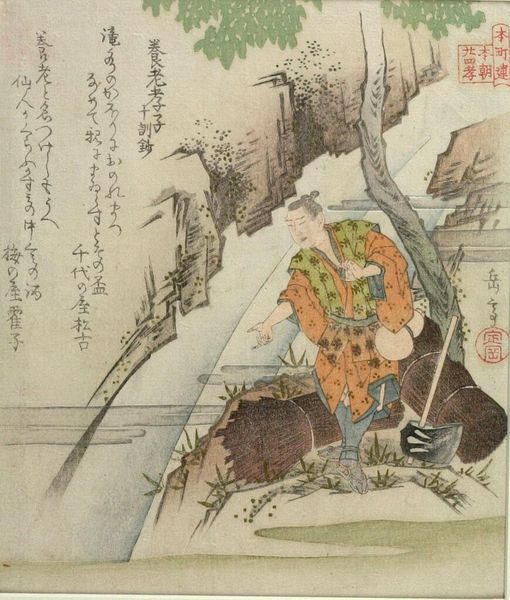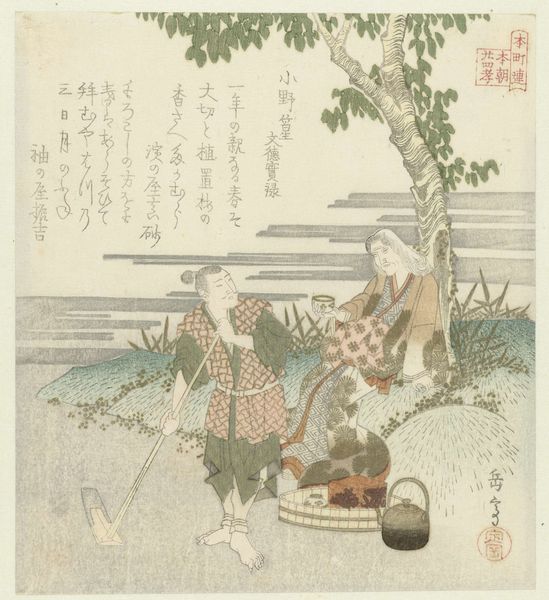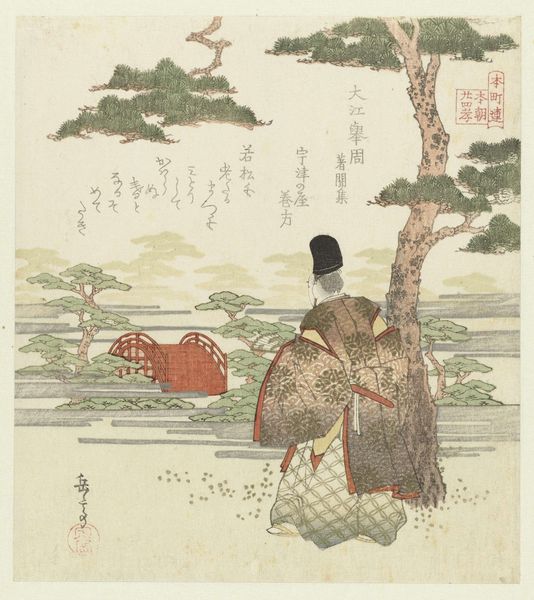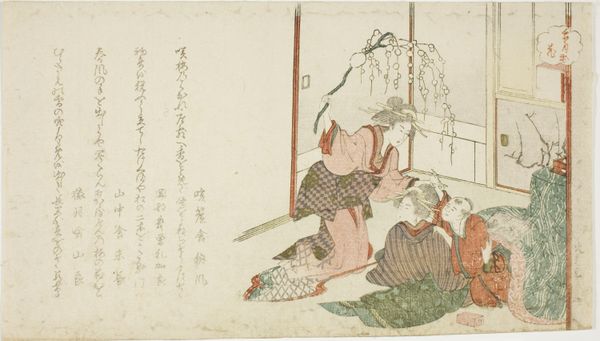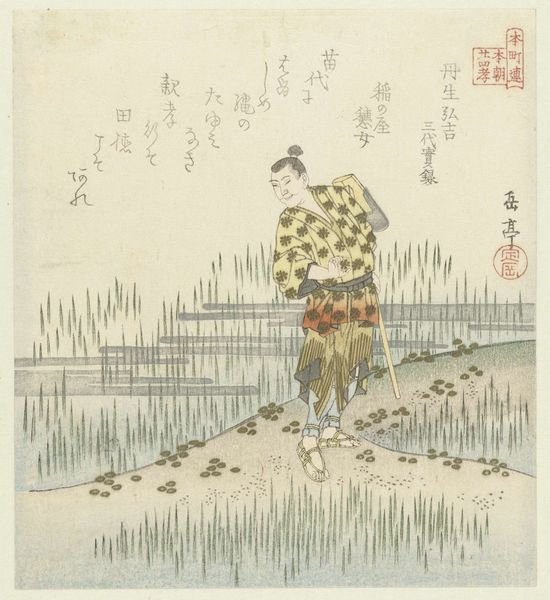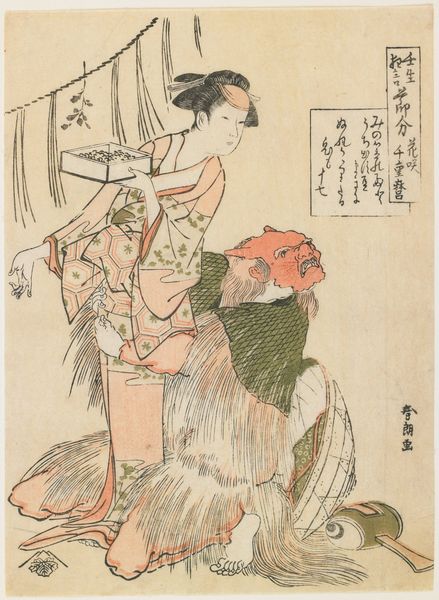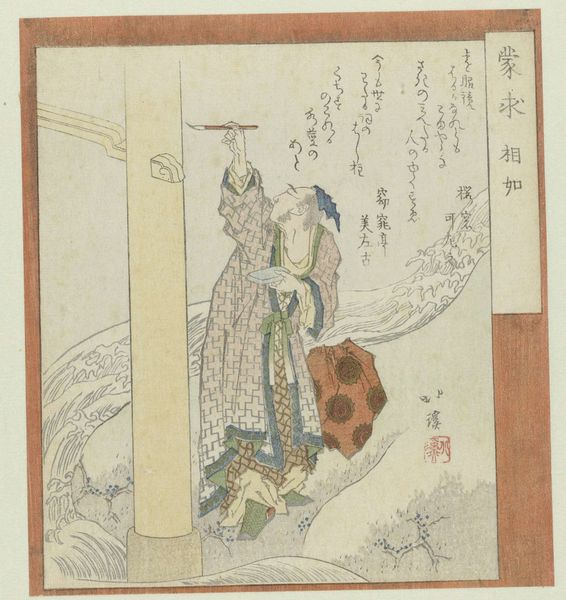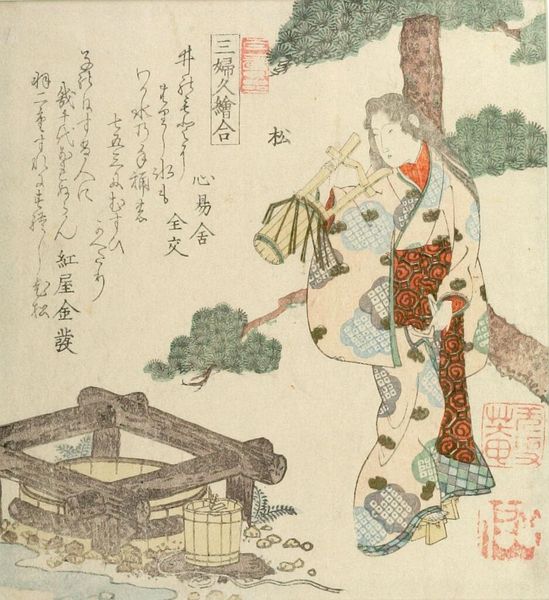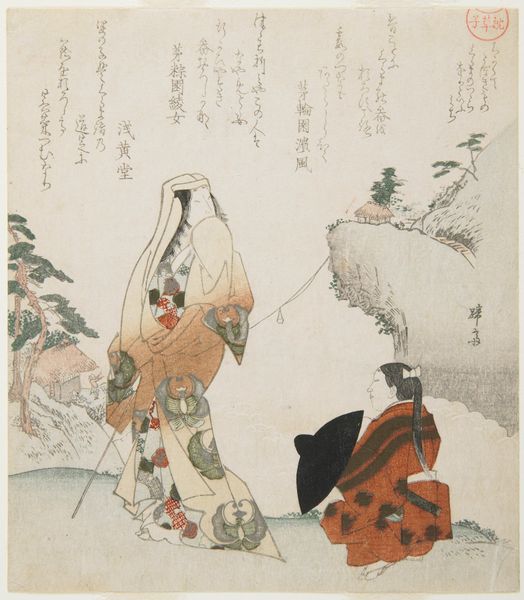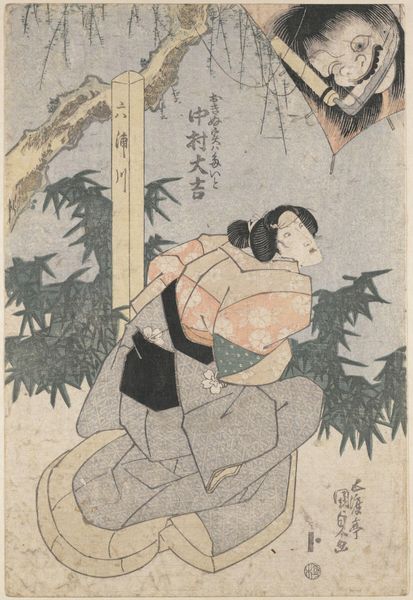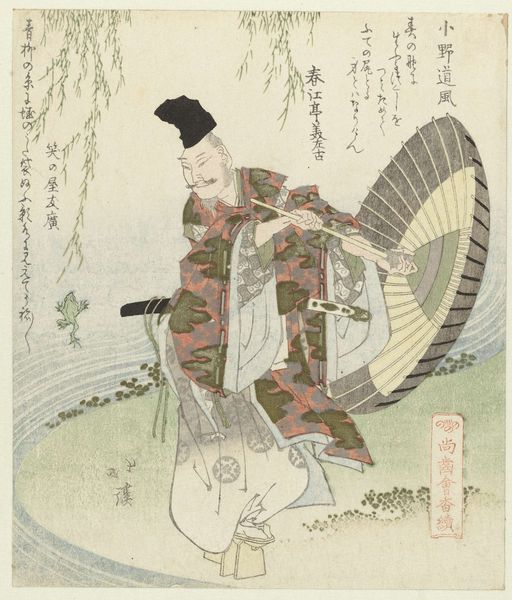
Twenty-four Japanese examples of filial piety for the Honchôren c. 1821
0:00
0:00
yashimagakuteiwudaoyueting
Rijksmuseum
print, ink, woodblock-print, pen
# print
#
asian-art
#
landscape
#
ukiyo-e
#
figuration
#
ink
#
coloured pencil
#
woodblock-print
#
pen
Dimensions: height 203 mm, width 181 mm
Copyright: Rijks Museum: Open Domain
Curator: Let’s turn our attention to this woodblock print by Yashima Gakutei, dating from around 1821. It's titled "Twenty-four Japanese examples of filial piety for the Honchôren," and it's just brimming with detail. Editor: Right away, I’m struck by its peaceful air. Despite all that's happening in the image, there's a gentle quality to the composition and colours that feels like a calming exhale. I almost feel like I’m stepping into a serene little haiku. Curator: That sense of serenity is interesting given the theme. Filial piety, or devotion to one's parents, carries significant cultural weight. In Confucian thought, which heavily influenced Japan, it's considered the cornerstone of a harmonious society, the family unit being a microcosm of the wider social order. So, scenes of exemplary filial behavior reinforce those values. Editor: And in this particular image, we see a man carefully pointing or reaching towards what looks like water or some kind of beverage...there's so much going on but its not too overwhelming...Its nice Curator: Yes, note also the landscape setting, a feature often seen in ukiyo-e prints. The figure isn't isolated; he's embedded in a wider natural context. This highlights that virtues aren’t solely individual. These are interwoven with broader social and environmental contexts. That cliff face, the flowing water, everything around him participates in that harmony, in a way. Editor: You're right. The text actually works with the artwork to guide the mind down and to the man like water from a stream Curator: Indeed, The artist links narrative and moral teaching through vivid scenes, allowing the cultural weight of filial piety to ripple outwards Editor: Absolutely. You start to feel this echo of responsibility that’s meant to extend throughout the family, all through a seemingly simple image Curator: It's precisely that ability to condense complex themes into an easily accessible image that speaks volumes, doesn’t it? It shows how intertwined art is with societal teachings, subtly reminding us of historical beliefs about morality. Editor: You know, I think it really drives home how visuals can become such powerful keepers of tradition... They make ideals feel present. It's made me rethink the art piece entirely. Curator: Yes, and the ability to distill generations of history in a work of art will continue to surprise us all.
Comments
No comments
Be the first to comment and join the conversation on the ultimate creative platform.
